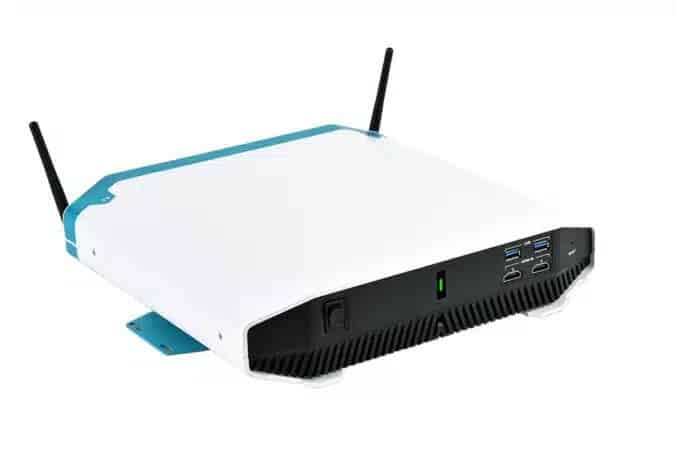
AI in Embedded Computing
Posted on October 15, 2024
AI has finally reached the point where it is no longer just a buzzword but rather a practical technology you can use to give your business an edge. But how exactly do you get started with AI? What is involved in deploying AI solutions in your application?
What is the Use of AI?
Before we jump into the details of how to implement AI in your business, it is important to know what it can even do for you. The use case of AI can be divided into two broad categories – automation and predictive analysis.
Automation isn’t anything new; we have used embedded PCs for industrial automation for ages. What AI does is increase the scope of what’s possible, automating tasks that are beyond simply algorithms. Image recognition, for example, lets a machine accurately detect objects from a visual feed alone, letting it handle more complex tasks without human assistance.
The most important use case for AI, however, is data analysis. At its core, AI is a statistical tool that excels at processing large amounts of data and yielding insights based on it.
Things like anticipating demand to create more functioning supply chains, or predicting faults before they even occur are its strong suit. AI can even monitor processes in real-time to understand trends and improve efficiency.
Does AI Need Specialized Hardware?
AI models generally require a powerful GPU to function properly. Some chips are even specialized for AI applications, making them even more suitable for running AI solutions.
That being said, you don’t necessarily need the AI model to live on the edge device itself. Cloud computing lets you centralize the AI processing in a more powerful server while the deployed devices are simpler IoT products that simply transmit and receive the data.
For setups like this, you only need rugged IoT boards that can withstand the operating conditions while serving as a gateway to the server running the actual AI algorithm.
At the same time, Edge computing has become more affordable as well. There are many embedded systems that include a discrete graphics card, or even high-performance integrated graphics that are capable of AI processing.
This lets you deploy AI solutions on the field itself, cutting down the processing time and often the costs of a centralized server.
What Are Some Applications of AI?
Medical Imaging
Diagnosing a patient quickly is crucial in healthcare, and usually requires an experienced doctor to go over the scans before a proper diagnosis can be made. But AI-powered devices can instantly analyze the results of diagnostic tests and determine anomalies, letting healthcare professionals prioritize high-risk cases.
These diagnostic solutions can even be rolled out to touchscreen tablets to let nurses (or even patients) monitor their condition 24/7.
Warehousing
Thanks to E-commerce and global supply chains, warehouses go through inventory much faster than ever before. Keeping track of the quickly sifting inventory and ensuring every product remains stocked is a herculean task.
Thanks to AI, automation can be integrated into this facet of the supply chain as well. AI algorithms can accurately deduce dwindling shelves and even read labels from a distance, allowing them to automatically place orders for dwindling stocks. Advanced machinery can even transport boxes within the warehouse floor when backed with AI processing.
Industrial Automation
Automation has been a staple in manufacturing for a long while now, but there are still many repetitive tasks that normal machines still cannot handle. Traditionally, the software that controls such equipment works within exact perimeters, so products that are not perfectly arrayed cannot be processed this way.
But AI-powered automation overcomes this limitation. The machines can now detect object boundaries and use that information to properly orient their tools, allowing them to work on products that are roughly arranged as well.
Should You Invest in AI Solutions?
At the end of the day, AI is not a paradigm shift like Cloud computing or Edge computing. If your application needs are already met with current technologies, you don’t need AI.
That being said, AI solutions can improve performance and efficiency in many areas, besides unlocking new avenues that traditional computers cannot explore. Ultimately, businesses that adopt AI are going to get an edge against their competitors, which in itself is an important consideration.
To tap into this new advancement yourself, you need to look at your workflow and find places where AI can excel. Be it automation, imaging, or data analysis, there is always some aspect of your application that can be enhanced by AI-powered embedded computers.
